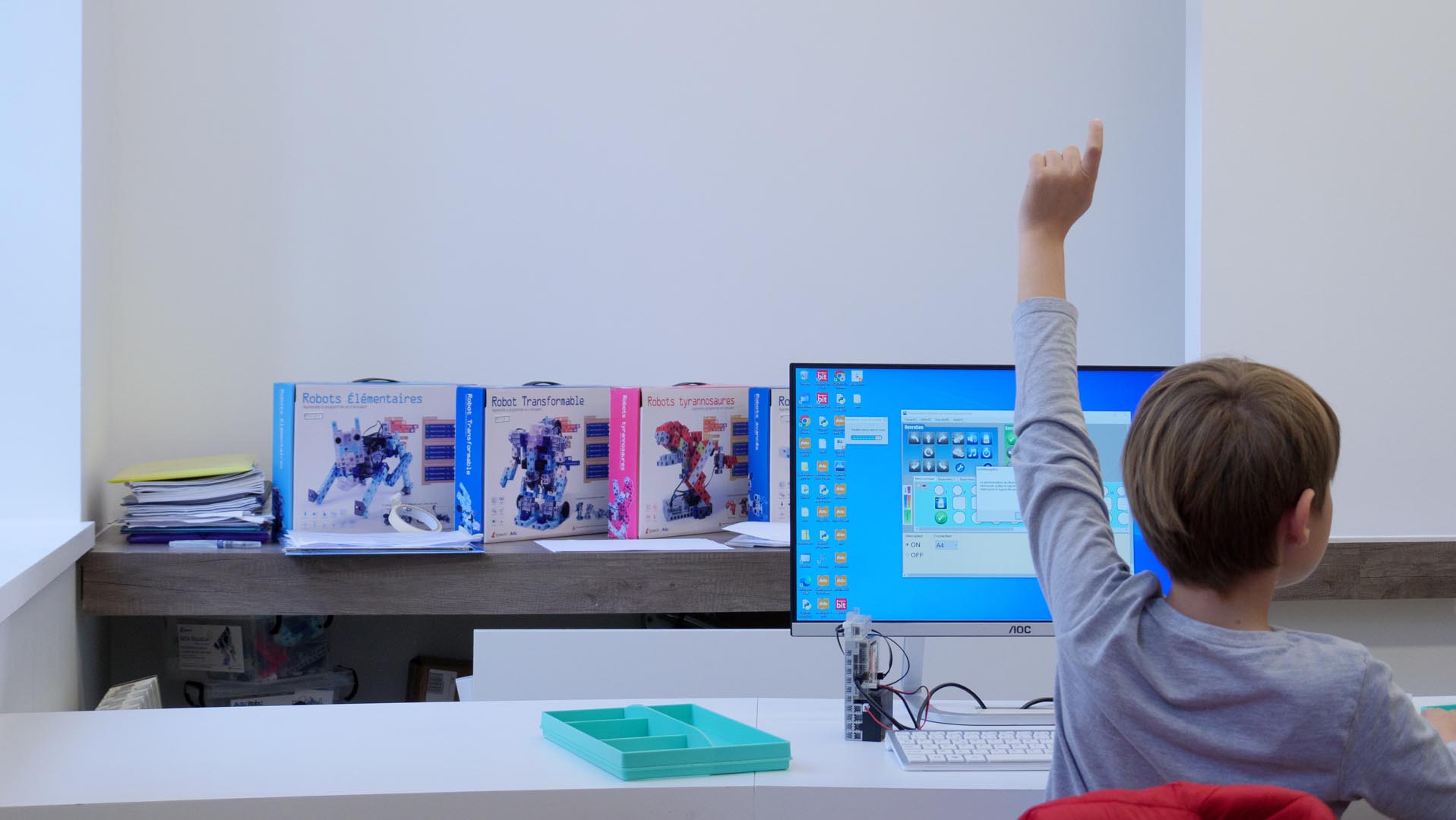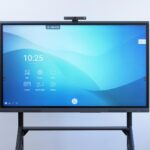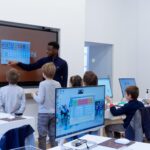In recent years, interactive display screens have revolutionised the way preschool and primary school pupils learn the fundamentals. Read on to learn about why you should adopt this technology in the classroom.
Interactive displays have proven to be a game-changer everywhere, from business meeting rooms to preschool and primary school classrooms – but what is an interactive display, and why is it so useful in educational settings?
What is an interactive display for preschool and classrooms?
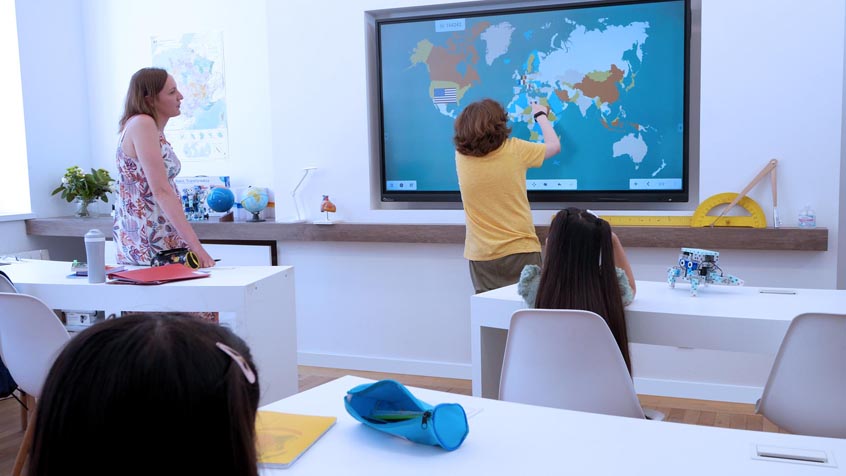
An interactive display screen is, in essence, like a giant tablet – but designed to be viewed and used by multiple people at once. They react to the touch of a user’s fingertip or stylus, and connect to the internet.
They are also a turn-key solution, which means they do not require any prior configuration or calibration beforehand – users can simply switch them on and get started using them. Most of our interactive displays are based on an Android interface, which makes them very quick and easy to use – but our premium interactive display range offers a Windows interface.
An interactive display for preschool and primary school classrooms will offer software suites, tools and resources specially designed for teaching.
For example, our interactive displays for preschool and classrooms come with Iolaos software, which makes it easy for teachers to build visually impactful, eye-catching presentations. Iolaos also offers subject-specific resources for certain lessons, like maths and science. With tools for annotating and note-taking, the ability to manipulate elements on the screen, and a stunning display for educational videos, interactive displays offer much more than the benefits of a traditional whiteboard.
What are the benefits of using an interactive display in preschool and classrooms?
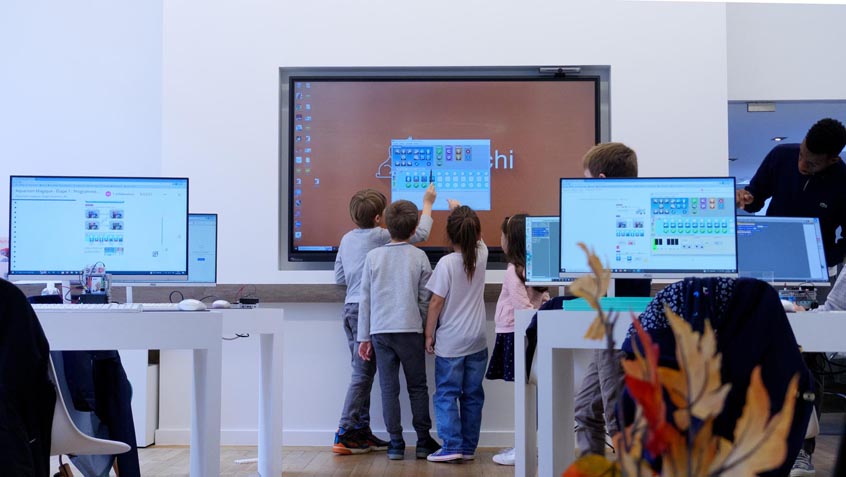
Increased engagement from pupils
It will probably come as no surprise to anyone that students are far more engaged in learning when the class is taught with an interactive display screen. With important skills and knowledge communicated through fun games, entertaining videos and interactive exercises, paper textbooks and static drawings with marker pens simply pale in comparison.
When pupils enjoy the process of learning, they will not only pay more attention in class, but also pick up and retain information more quickly.
A range of resources available online
Want to supplement your own teaching resources with extra material? The internet offers a goldmine of free and paid interactive display resources for preschoolers and primary school pupils. For preschoolers learning to read and write, Twinkl is a trusted source of planning and assessment materials, applications and fun games specially designed for teaching children.
For example, instead of getting your class to learn their numbers by reciting them, why not teach them with a counting game that will teach them to say, recognise and draw the numbers? The Khan Academy website is also a world-class provider of teaching resources for students of all levels, with the ability to filter material by subject, key-stage and learning group.
All of their materials are free for learners and teachers, and can be pulled up directly on your interactive display.
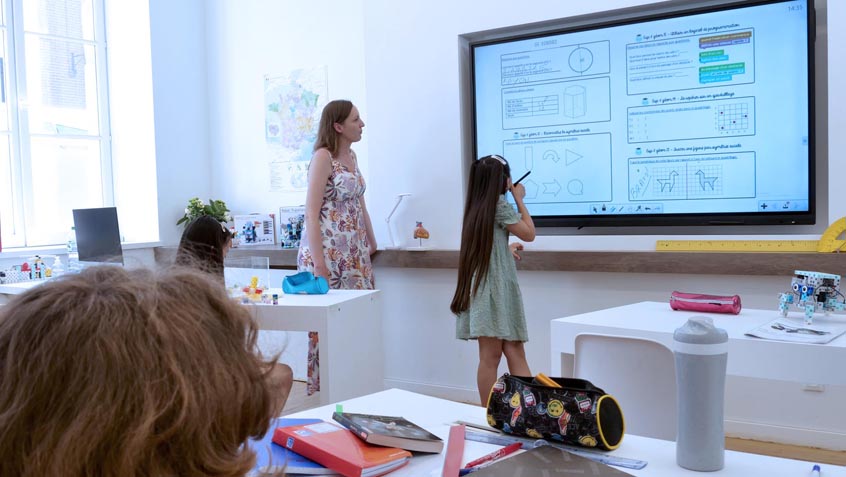
Fosters digital literacy in children
No matter how we feel about children using technology, we must accept that digital literacy is an important skill that they will need in the future.
The earlier they are familiarised with computers, tablets and interactive devices, the more they will feel at ease using them as teenagers and adults. Also, by embracing smart whiteboard technology in the classroom, you can teach them core ground rules about the healthy, ethical use of technology.
Best of all, this knowledge will be relevant in both their education and their personal lives.
